Backup iPhone, restore iPhone data with iTunes
Your iPhone is the place to store all your photos, messages, and documents with all the settings and utilities that best suit you. It can be said that data is very important, so maintain the habit of backing up your phone regularly, so that if there is any problem with your device, you can easily restore it without worrying. what?
The two most commonly used tools for backing up and restoring data on iPhone devices are iCloud and iTunes. In this article, TipsMake will focus on learning how to do it on the iTunes application - a popular tool that most iOS users know with extremely useful features. Invites you to read the track.
Backup iPhone data with iTunes
To limit data loss when we restore, reset or change to a new iPhone device, users should perform regular backup operations using the iTunes tool.
Step 1: First, connect your iPhone to the computer that has iTunes installed via the USB cable.
- See more:
Step 2: Next, at the iTunes interface, click on the device icon near the top left of the window.
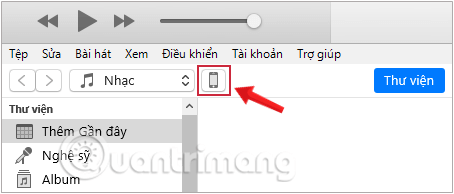
Step 3: In the Backup section , choose to back up data to iCloud or to the computer you are using (This computer) to store data, then click Backup now next to proceed. always do it.
You should choose to back up to your computer to be more complete.
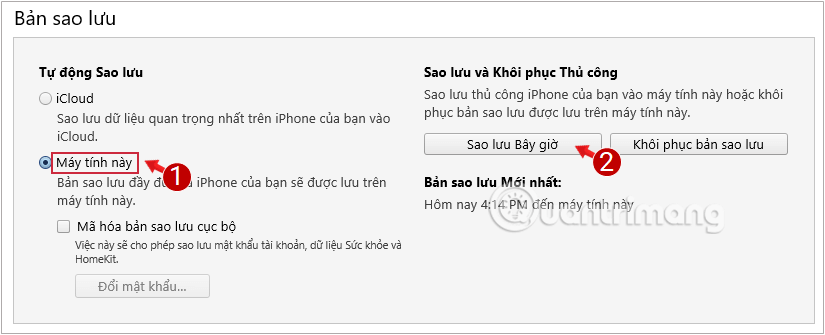
You can also secure your backup with a password. Click Encrypt local backup (Enctypet iPhone Backup), enter the password twice, then select Set password and you're done.
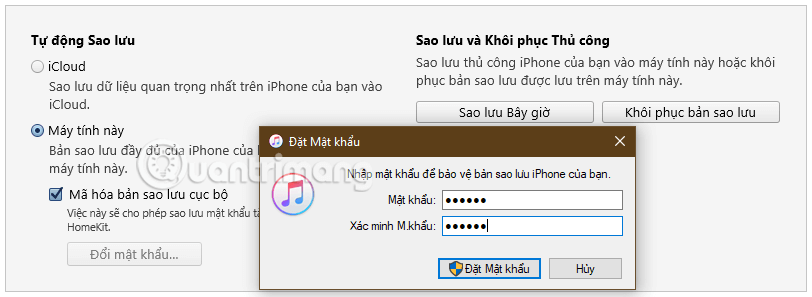
Instructions for recovering data using iTunes after restoring or resetting iPhone
If your iPhone runs slowly or has many annoying problems when using it, you should restore the device, erase all content on the device and reinstall it.
Once erased, start the data recovery process using iTunes. Remember to make sure you have fully backed up with the steps above before erasing your iPhone. Next do the following:
First, connect your iPhone to the computer where the synchronization operation was performed.
Step 1: Access iTunes on your computer. Next, click on the device icon to go to the recovery interface, find the Backup section and then click Restore Backup .
In case when connecting iPhone to computer and requires a password, let's try switching to another computer that has been synchronized. Or use Recovery mode.
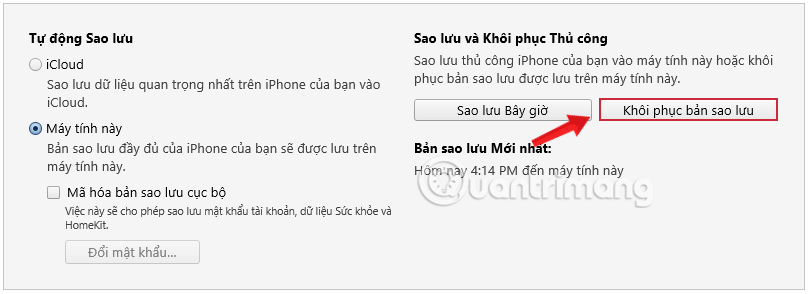
In case you receive a notification to turn off Find My iPhone, you must go to Settings on your iPhone to turn it off.
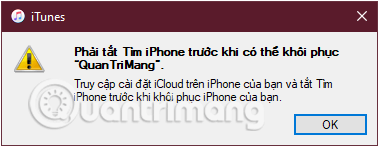
Go to Settings > Account name > iCloud > Find iPhone > Turn off. Once completed, the data can be restored.
Step 2: Next, find in the list the time your device was backed up with iTunes. Find the backup date and select the appropriate data then click Restore to get all the data back.
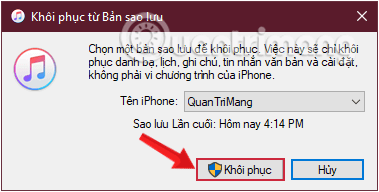
As for saving health app data or messages, you can use a third-party app like Health Data Importer to export and import health app backups or SMS Export Plus to save copies of iMessages .
Once you're sure you've backed up important data on some cloud service, you can perform a fresh iOS installation on your iPhone.
Above are some ways to help you get back all data on your iPhone when resetting, restoring, backing up or restoring data from previous backups. The best way to limit data loss in case your iPhone fails is to not skip backing up data to iCloud or iTunes.
Good luck!
Explore more:
You should read it
- Instructions for transferring data from old iPhone phones to iPhone 7 / iPhone 7 Plus
- How to backup data on iPhone or iPad
- How to backup, backup iPhone messages quickly and easily
- Things to know about backing up your iPhone and iPad
- How to Backup iPhone data to computer
- What do you need to do before upgrading to iOS 10?
 How to export iPhone contacts, sync iPhone contacts to Gmail
How to export iPhone contacts, sync iPhone contacts to Gmail Backup iPhone, restore iPhone data from iCloud
Backup iPhone, restore iPhone data from iCloud How to transfer photos/videos from iPhone to computer without iTunes
How to transfer photos/videos from iPhone to computer without iTunes Instructions for using memories album on iPhone in Photos
Instructions for using memories album on iPhone in Photos Android does not have an OBB folder, how to solve it?
Android does not have an OBB folder, how to solve it? How to use Nextcloud on Android to replace Google Drive
How to use Nextcloud on Android to replace Google Drive